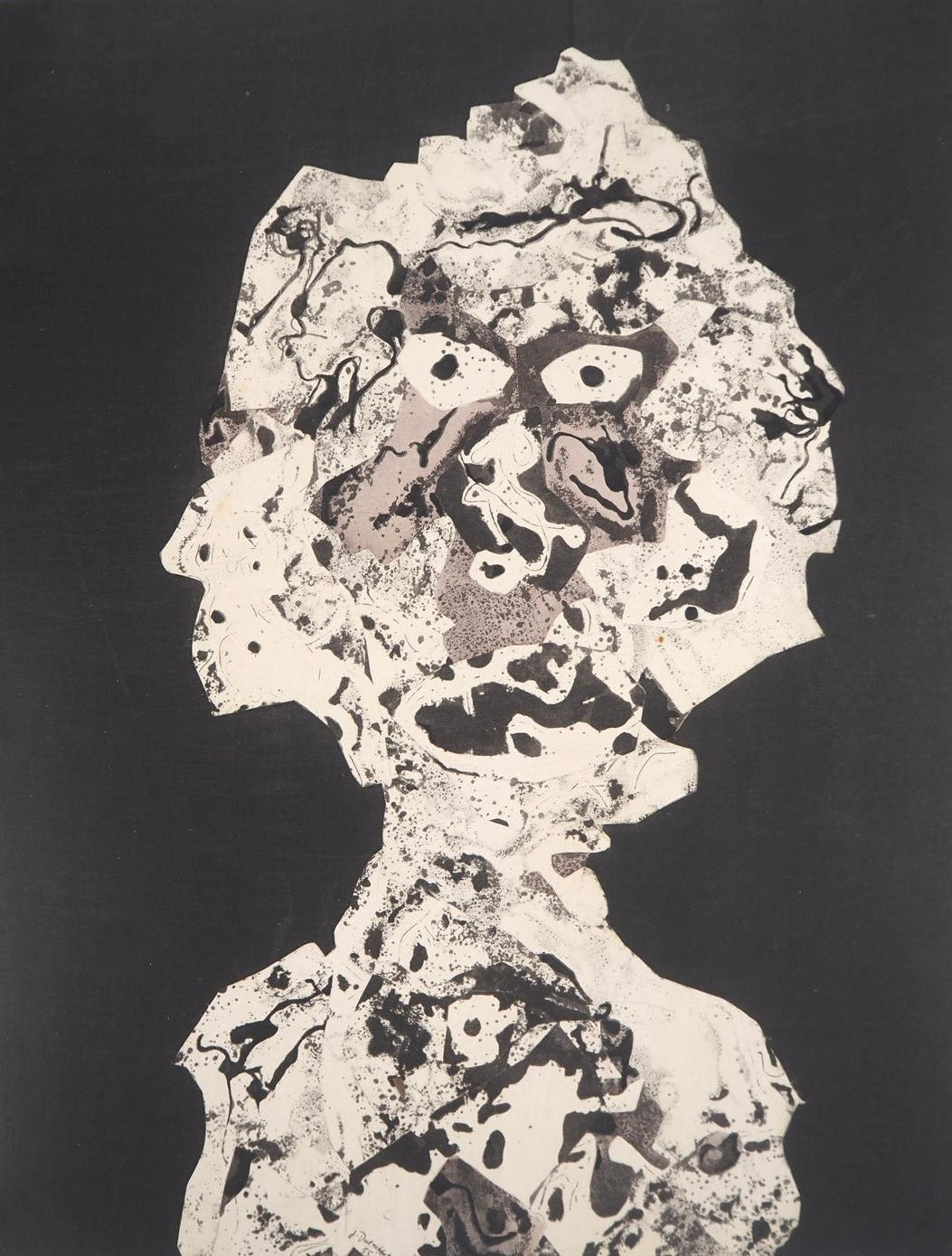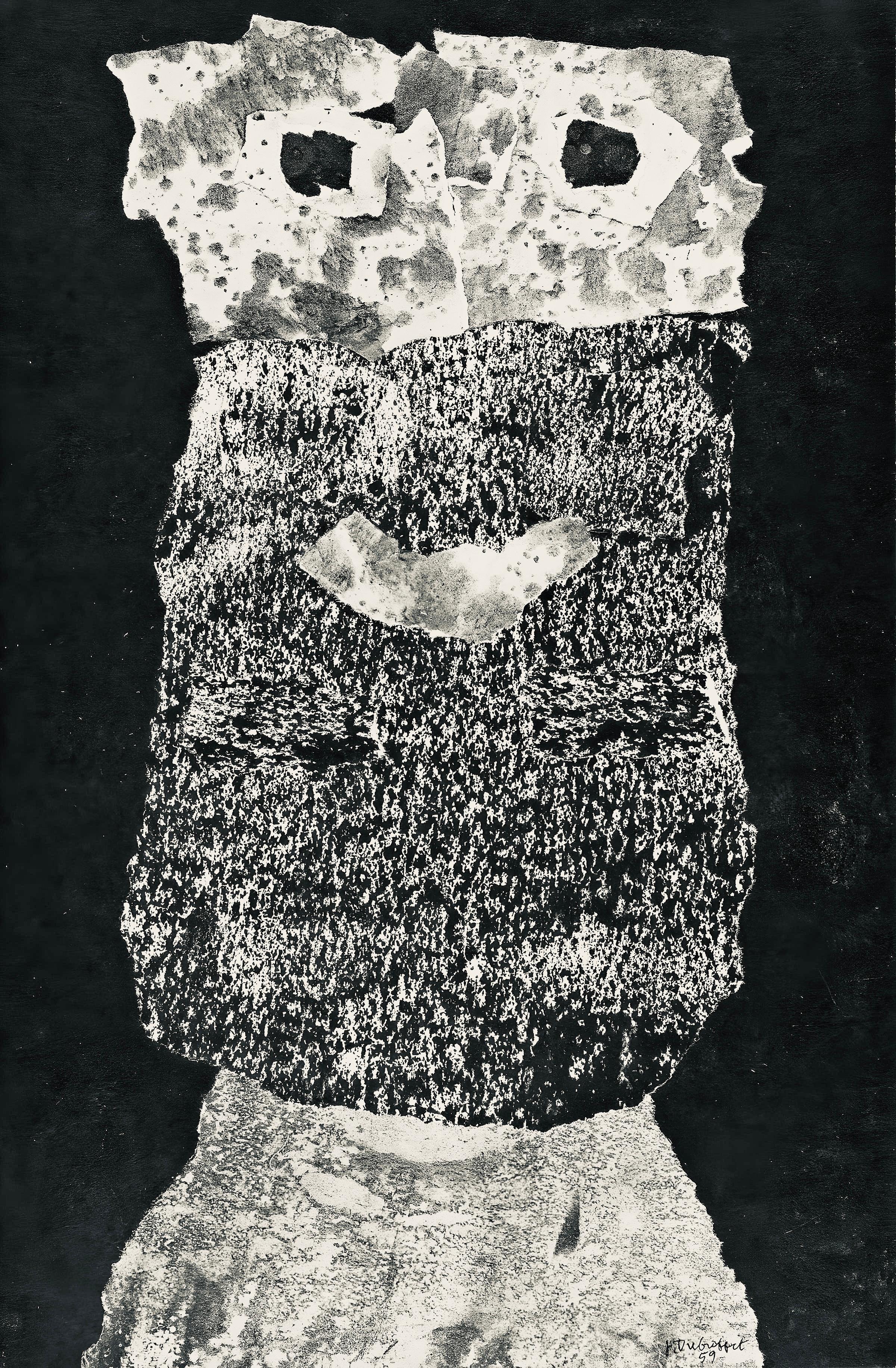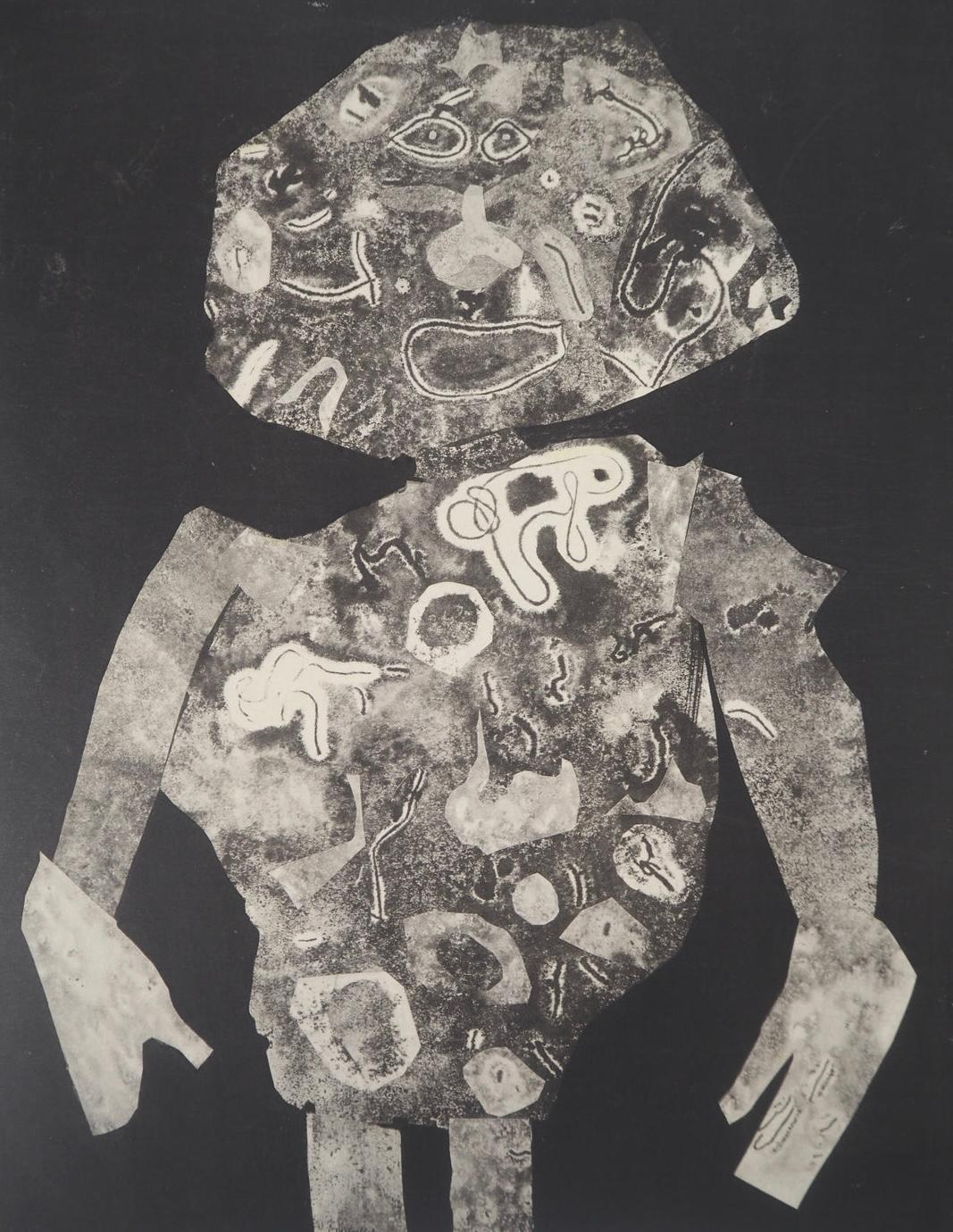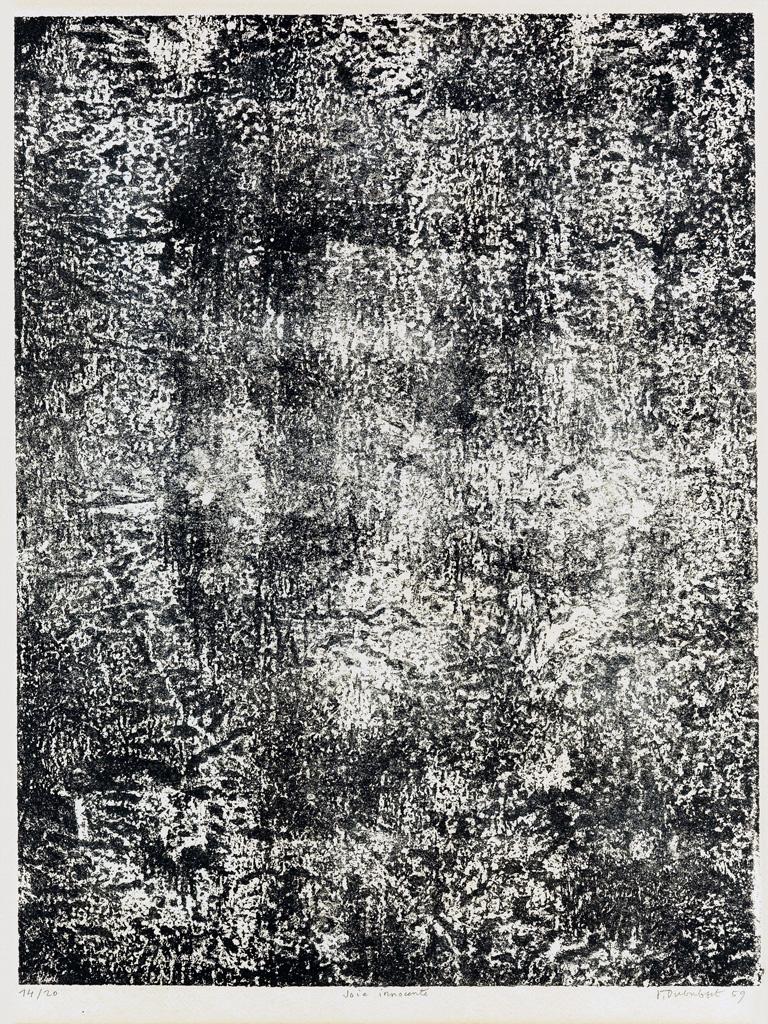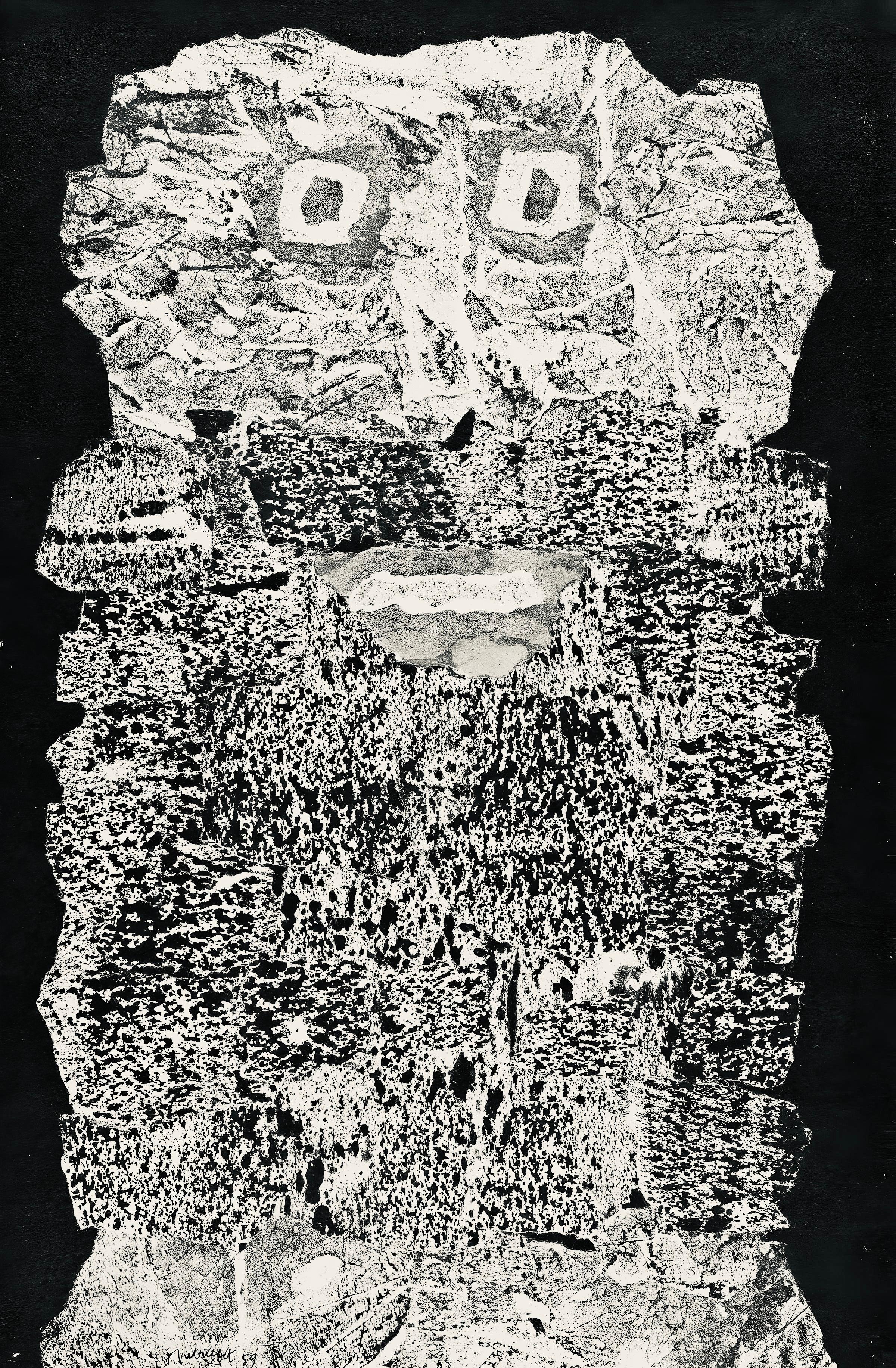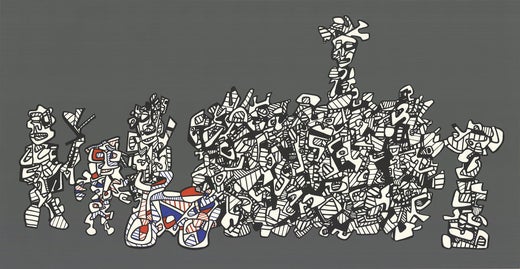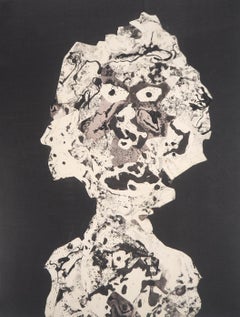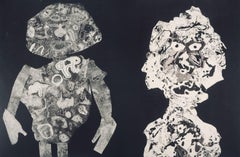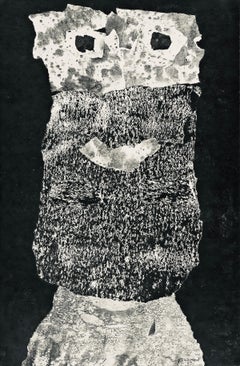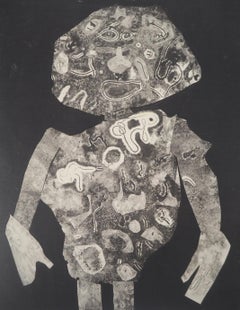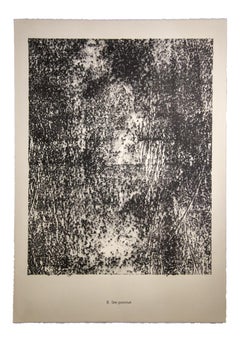This exquisite lithograph and pochoir by Jean Dubuffet (1901–1985), titled Barbe des Perplexites (Beard of Perplexities), from the album XXe Siecle, Nouvelle serie, XXIIe Annee, No. 14, Juin 1960, originates from the 1960 edition published by Societe Internationale dArt XXe Siecle, Paris, under the direction of Gualtieri di San Lazzaro, editeur, Paris, and printed by Atelier Daniel Jacomet et Cie, Paris, 1960. Barbe des Perplexites reflects Dubuffets continuing exploration of texture, landscape, and the raw spontaneity central to his early Art Brut investigations.
Executed as a lithograph and pochoir on velin paper, this work measures 12.5 x 9.75 inches. Signed in the plate and unnumbered as issued. The edition exemplifies the superb craftsmanship of Atelier Daniel Jacomet et Cie, Paris
Artwork Details:
Artist: Jean Dubuffet (1901–1985)
Title: Barbe des Perplexites (Beard of Perplexities)
Medium: Lithograph and pochoir on velin paper
Dimensions: 12.5 x 9.75 inches (31.75 x 24.77 cm)
Inscription: Signed in the plate and unnumbered as issued
Date: 1960
Publisher: Societe Internationale dArt XXe Siecle, Paris, under the direction of Gualtieri di San Lazzaro, editeur, Paris
Printer: Atelier Daniel Jacomet et Cie, Paris
Condition: Well preserved, consistent with age and medium
Provenance: From the album XXe Siecle, Nouvelle serie, XXIIe Annee, No. 14, Juin 1960, published by Societe Internationale dArt XXe Siecle, Paris; printed by Atelier Daniel Jacomet et Cie, Paris, 1960
About the Publication:
Gualtieri di San Lazzaros XXe Siecle (Twentieth Century) was one of the most influential art journals of the modern era, founded in Paris in 1938 as a platform for the greatest painters, sculptors, and writers of the 20th century. San Lazzaro, a visionary editor, critic, and champion of modernism, believed that art and literature should coexist as expressions of a shared human imagination. Under his direction, XXe Siecle became a cultural bridge between Europe and the wider world, publishing special issues devoted to leading figures such as Picasso, Matisse, Chagall, Braque, Calder, Miro, Kandinsky, and Leger. Each edition combined essays by renowned critics and poets with original lithographs and woodcuts printed by the foremost ateliers of Paris, Milan, and New York, including Mourlot, Curwen, and Amilcare Pizzi, creating a uniquely rich dialogue between text and image. The 1960 issue, XXe Siecle, Nouvelle serie, No. 14, showcased Daphnis et Chloe, one of Chagalls most celebrated lithographic subjects, coinciding with his work on the monumental suite of lithographs inspired by the same pastoral tale, published by Teriade. Through this publication, San Lazzaro further cemented Chagalls reputation as the modern poet of color and love, uniting myth, nature, and emotion in visual form. Today, XXe Siecle remains an essential record of 20th century modernism, celebrated for its seamless integration of fine art, literature, and design.
About the Artist:
Jean Dubuffet (1901–1985) was a groundbreaking French painter, sculptor, printmaker, and visionary theorist whose radical rejection of academic refinement and passionate championing of Art Brut redefined the possibilities of modern art, securing his place alongside Pablo Picasso, Alexander Calder, Alberto Giacometti, Salvador Dali, Joan Miro, Wassily Kandinsky, Marcel Duchamp, and Man Ray as one of the most influential creative forces of the 20th century; born in Le Havre and initially trained at the Ecole des Beaux Arts, he renounced traditional technique, hierarchy, and aesthetic ideals in favor of raw, immediate forms of expression inspired by childrens drawings, graffiti, vernacular signage, non Western traditions, and the work of psychiatric patients and other outsider creators whose authenticity he believed revealed the true pulse of human creativity, pioneering the use of unconventional materials tar, sand, gravel, limestone paste, coal dust, plaster, clay, asphalt, and thick impasto that transformed painting into a physical, sculptural terrain and shattered boundaries between mediums; his early intellectual and artistic peers included Georges Bataille, Jean Fautrier, and Antonin Artaud, whose explorations of instinct, existentialism, and the raw psyche echoed Dubuffets revolt against cultural elitism, while his seminal Hourloupe cycle of interlocking red, blue, black, and white cellular forms became one of the most iconic visual systems of the postwar era, laying the foundation for immersive installation art, public sculpture, performance environments, and architectural interventions; his influence reverberates through generations of artists including Jean Michel Basquiat, Anselm Kiefer, Julian Schnabel, Eddie Martinez, Sterling Ruby, Richard Prince, and George Condo, and his works are held in major museums worldwide such as MoMA, the Metropolitan Museum of Art, the Guggenheim Museum, Tate Modern, Centre Pompidou, the Hirshhorn Museum, the Art Institute of Chicago, Fondation Beyeler, and Kunstmuseum Basel; widely celebrated for expanding the definition of art itself, Dubuffet remains a cornerstone of modern visual culture, and his highest auction record was achieved on June 30, 2020, when La Rue Tournique Bourlique sold for 24,000,000 USD at Christies Paris, underscoring his enduring market strength and the lasting global demand for his revolutionary vision.
Jean Dubuffet XXe Siecle 1960, Jean Dubuffet lithograph, Dubuffet Barbe des Perplexites.
